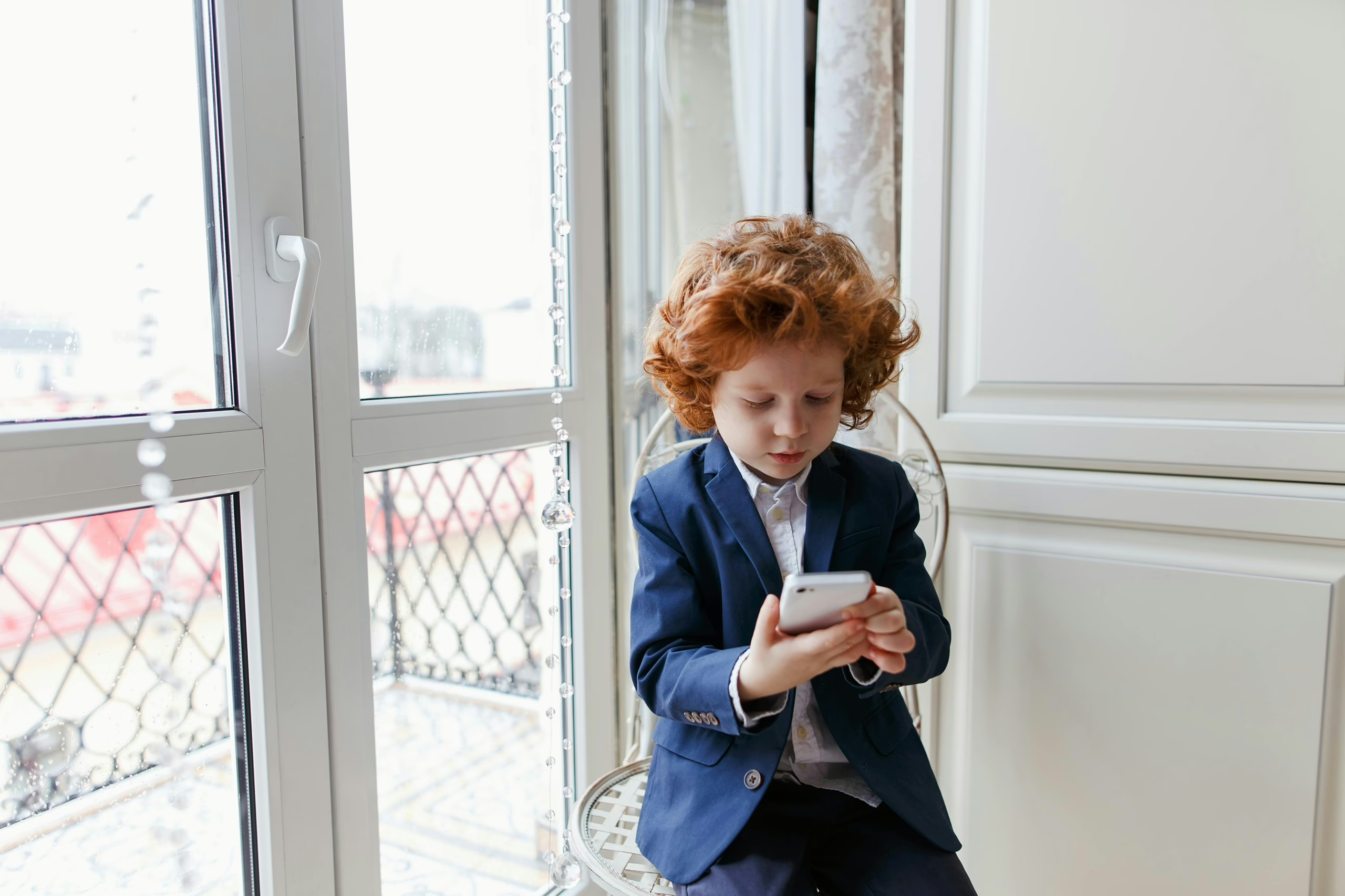Parents urged to manage smartphone use. Last year, the Channel 4 documentary Swiped revealed some eye-opening truths about the impact of smartphone use on children. Over 53% of the participating kids in the featured University of York study suffered from poor sleep quality because they were used to sleeping beside their phones. Another 17% spent more time on their phones than they did at school. Perhaps more concerningly, a whopping 42% were contacted by strangers online. All these issues negatively impacted their physical and emotional well-being.
Unfortunately, the full effects of smartphone use on kids can go even further. In particular, more health experts are linking it to the drastic rise in myopia (short-sightedness) among children. Currently, as many as one in three of the world’s children are short-sighted, including 15% of kids in the UK. By 2050, experts believe a full half of the global population—regardless of age—will be short-sighted, resulting in what they’re calling a myopia epidemic. To prevent it, they’re calling on parents to manage their kids’ smartphone use.
Keep reading to learn more about the link between smartphone use and myopia, as well as what parents can do to mitigate its effects on their kids.
The link between smartphones and myopia
Optometrist Jason Higginbotham, founder of the parent awareness portal Myopia Focus, specifically blames screens for the ongoing childhood myopia epidemic. He points out that during the COVID-19 pandemic, quarantine meant kids spent less time outdoors and more time looking at gadgets, particularly smartphones—and that habit persisted even after lockdown was lifted.
Higginbotham explains that time spent under the sun is vital for regulating the eyes’ development, and that heading outdoors also allows the eyes to practise switching between near and distance vision. In comparison, smartphone use does not expose the eyes to the same kind of light, and it exclusively requires near vision. Over time, it can thus cause the eyeballs to elongate, leading to the gradual development and worsening of short-sightedness. Smartphones and other devices also emit artificial blue light, which is bright enough to cause eye strain over prolonged periods. This strain can further stress the eyes, worsening elongation and myopia progression.
Given that short-sightedness can progress into the more severe high myopia and increase one’s risk of developing vision loss, eye health professionals have begun emphasising how important it is for parents to monitor their kids’ smartphone use as soon as possible. You may particularly want to focus on smartphone use, especially with Ofcom recently finding that nine in every ten British kids get their own smartphone before turning 11.
How parents can manage their kids’ smartphone use
One great way to start is by directly limiting the overall time your kids spend on their phones. Generally, the NHS recommends giving kids and teens no more than two hours of screen time a day. To help them more easily reduce their usage, consider making this limit separate from the hours they spend using other devices, like laptops, for schoolwork, as well as the time they spend using smartphones for necessary communication.
Monitoring your kids can also involve optimising how they use their smartphones in the first place. Though screen time is one thing you’ll want to manage, so is the amount of artificial blue light your kids are exposed to during the two hours a day they use their smartphones. To cut that exposure and prevent or minimise eye strain, consider getting them a pair of blue light glasses. Glasses Direct offers these with BlueReflect™ or KODAK UVBlue lenses, both of which can filter out the high-energy visible blue light from digital displays and improve visual comfort. For the best effect, your kids can also opt to use them when using any gadget, not just smartphones.
Finally, get your kids outdoors more often. For example, you can organise family activities like picnics, encourage them to set up outdoor hangouts with school friends or neighbours, or have them join team sports. Make sure to emphasise to them that the goal of these times is to give their eyes a break—and simultaneously take on opportunities to engage with others and participate in fulfilling activities that broaden their horizons beyond their smartphones.
A final word
Though the above steps can help you start mitigating the impacts of smartphone use at home, eye care experts emphasise that the comprehensive eye exam remains the most effective myopia management tool. ‘It’s not good enough just to get vision screening in school, that comprehensive eye test for your school-aged child is really important,’ says Matt Oerding, who leads the UK arm of the Global Myopia Awareness Coalition.
That’s because more exhaustive assessments are vital for determining if myopia is starting to develop—as well as if a child already has it. More importantly, licenced optometrists and ophthalmologists can provide the tailored advice parents may need to more effectively manage smartphone use and combat short-sightedness in their kids. Such suggestions may be particularly useful if kids exhibit signs of screen withdrawal, such as irritability and anxiety, and need more care and attention. That said, don’t forget to book your own kids an exam at least once a year. If they’re younger than 18, they can get checked for free, courtesy of the NHS, at widely-available optical chains like Boots.

